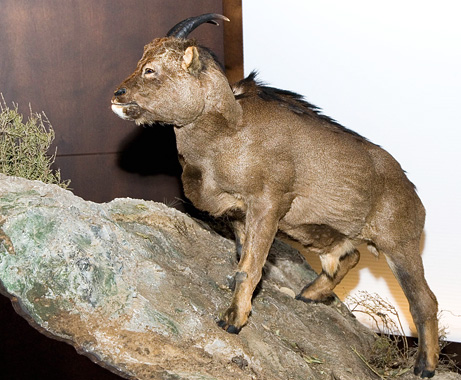
The discovery marks the first time scientists have seen this cold-blooded survival strategy in mammals.
The surprising skill likely allowed the goats to endure potentially fatal periods of scarcity on what is now the Spanish island of Majorca.
But the technique, developed when the goats had no major natural enemies, came with costs that seem to have made the now extinct goats unable to survive the arrival of skilled predators - humans - some 3,000 years ago.
The goats' energy-saving adaptations made the animals small and slow, noted study co-author Meike Köhler, a paleobiologist at the Autonomous University of Barcelona, Spain.
Slowing the "Fire of Life"
Fossils of the ancient goat, called Myotragus, were first found on Majorca in the early 1900s. The bones show the species lived on the island for more than five million years.
In most large mammals, constant high growth rates and metabolisms require continuous food supplies. By contrast, reptiles have slow growth rates and flexible metabolisms.
Since resources can fluctuate dramatically on isolated isalnds, reptiles often displace mammals in such places.
But the new study, which looked at the bone histories of several Myotragus individuals, revealed that the goats may have fine-tuned their growth and metabolic rates both seasonally and during irregular times such as droughts - just like reptiles.
"This way, it burned only the energy that was available from the environment, slowing down the 'fire of life' in times when resources became scarce," Köhler said.
Small, Slow, and Easy Prey
The lizard-like lifestyle, however, meant that Myotragus's newborns were extremely small - the sizes of large rats - and the young took years to reach adult size.
The goat also saved a lot of energy in its nervous system - among the body's most "costly" tissues - by sporting a brain only half the size of a similar-size hoofed mammal and eyes only a third as large.
The combined effect was that Myotragus was sluggish, with slow reaction times, the bone study suggests.
Like modern-day reptiles, the goats probably "saved as much energy as possible just lying around and basking in the sun," Köhler said.
"The postcranial skeleton indicates that this animal was not able to run, jump, or move fast around, and [would have been] easy prey."
Research appears online this week in the Proceedings of the National Academy of Sciences.



Reader Comments
to our Newsletter